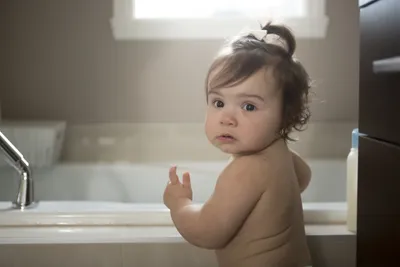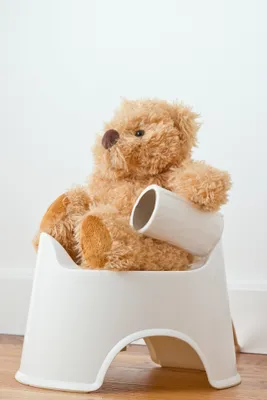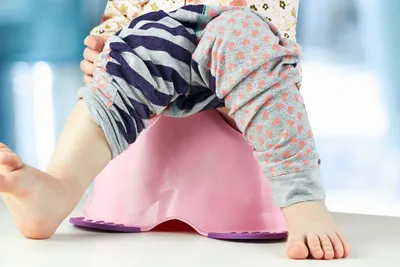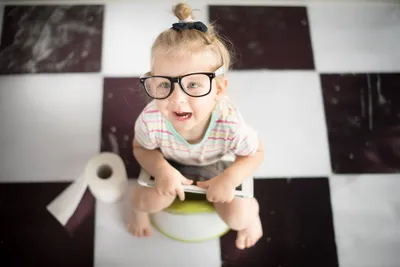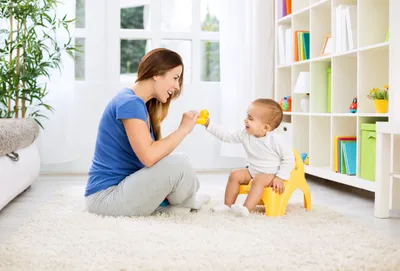There comes a time in every toddler’s life when they hang up the diapers and start answering the call of duty. This can be an especially challenging and confusing time for both you and your little one, so patience will be a virtue.
Some children are ready to try the potty before others, as early as 2-years or even less. Don’t panic or force your child to use the potty if they really don’t seem ready, as it may be more trouble than it’s worth. Here are seven tips to help your child adapt to going potty like a big boy or girl…
1. Let Them Run Free
Literally. If you still have diapers on your child that are absorbent, your child may pee without you even knowing it, and there won’t be any cues for your child to get to the potty.
Parents magazine notes you can let your children run naked before bathtime, and see if they naturally gravitate towards the mini-toilet. Once they realize that peeing while naked isn’t that pleasant, you can slowly introduce clothing back into the mix, adds the source.
2. Use Bribes if Necessary
Some kids may need a bit more incentive than others to make the transition – after all, why should they start running to the bathroom if they have a perfectly good diaper to soil?
Perhaps “bribes” is not the appropriate word to use – if you’re more comfortable with the “rewards” then go with that. BabyCenter.com confirms that a little gift of gratitude (in the form of a treat) goes a long way when training your child to use the bathroom (but hold off at the beginner stages, adds the article).
3. Show them How It’s Done
Parents magazine said it’s not a bad idea to lead by example in this particular endeavor. For example, the magazine notes that dressing your child in big-boy underwear (briefs) and a t-shirt and having dad follow suit can be helpful.
The source noted that the furniture and other items should be covered as a precaution – after all, carpet cleaning can be expensive. When it’s time to go, your child might not feel so out-of-place when dad is dressed the same and show’s how it’s done.
4. Make Potty a Favorite Seat
Determine what room your child spends the most time in (not necessarily the bathroom) and have them sit on the potty chair whether they have a diaper on or not, suggests the Mayo Clinic.
Take this concept one step further by letting your child decorate the potty to make it more his or her own, notes the clinic. There’s nothing wrong with them slapping on a couple of stickers to make the potty more appealing to them.
5. Graduate to Training Pants
While you might want to play it safe for the first little while with absorbent diapers, you should ditch the diapers altogether after a few weeks and move up to training pants or underwear, adds the Mayo Clinic.
It’s all about how comfortable you are with having a potential mess on your hands (hopefully not literally), but training pants can be easily pulled up or down by your child while still offering some protection from accidents. Let your child pick out their training pants or underwear, adds the source.
6. Break the Training into Sessions
Parenting.com suggests taking a few hours twice a day to get your child accustomed to sitting on the potty, by placing them on it every 15 minutes or so during regular playtime. At the end of the session, you can replace the diaper or training pants.
The site says morning and afternoon training sessions work well, when they’re at home in familiar surroundings. Repeat this for the first 2-days, then on the third day walk your child to the potty every 15-minutes for the entire day. Bring a spare potty with you if you plan to be on the go with your child, it adds.
7. Get Caregivers Involved
If your little one is in the midst of learning how to go potty, it makes sense to let their teachers and care providers know so they can adjust accordingly. This may involve teaching your child to speak up when they have to go pee, or familiarizing the child with the washroom so it’s not a scary place.
Parenting.com also suggests giving the caregivers some stickers or other rewards to hand out when your child successfully uses the bathroom. If you’re worried about your child having to go in the presence of strangers the first time, arrive early and accompany them to the toilet.

